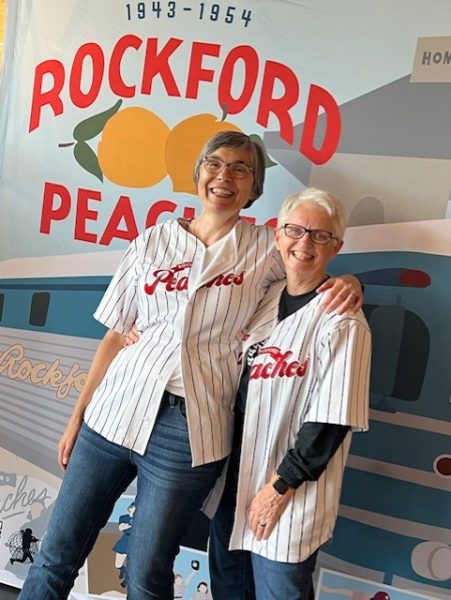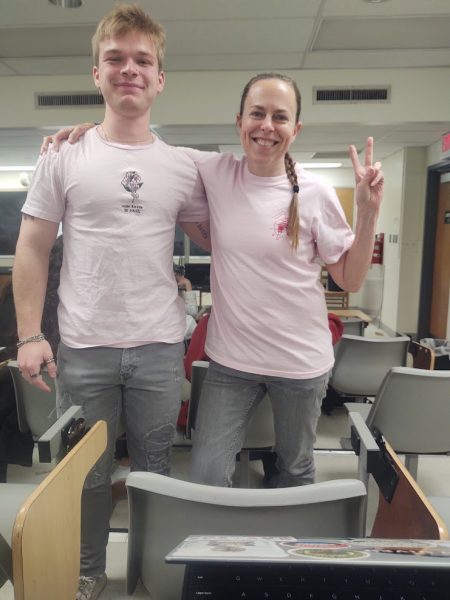GINGERS’ GUIDE TO: Being redheads
Hanna Pennington | Life! Editor
Amanda and Heather, two ginger friends. They’ve been bullied for having red hair in the past, but now they’re certainly learning to love and embrace their hair and ‘gingerness.’
Did you know red is the most popular dyed hair color? That’s right, most of your favorite red-haired actresses probably aren’t natural. It seems like everyone wants to have red hair, but no one actually wants to be a redhead. So what exactly does this mean?
Well, being a natural redhead certainly has its ups and downs. Going through school, we’re usually bullied and called a whole slew of offensive nicknames, most of which are not worth repeating, although we’ll explain one in more detail later. Once we go to college or enter the real world, suddenly those middle school teasings don’t make much sense anymore. That’s because we see so many people who are trying to be us by dying their hair or drawing on freckles as part of their daily makeup routines. When does that switch happen, from hating us to wanting to be like us? And more importantly, why?
Maybe one reason is that redheads stand out, which is good and bad. We’re never lost in a crowd, but we can’t easily hide if we want to, either. We always receive attention whether we want to or not, and sometimes, just sometimes, things might get handed to us if someone has a thing for redheads. Sure, creeps do exist, but at least some people appreciate our hair, which makes it easier for us to do the same. Because that can be hard sometimes.
One term we hear often is “ginger.” Both of us grew up hearing ginger with a negative connotation, which made us hate the idea of being a redhead. The term comes from a “South Park” episode, “Ginger Kids,” where a brunette kid gives a report on ginger kids and how they “creep us out and make us feel sick to our stomachs.” He calls being a redhead a disease, “Gingervitis,” and how “it occurs because gingers have no soul.” To compare, the brunette kid also explains that those with red hair and no freckles are called “daywalkers.” So under this definition, Heather is a ginger and Amanda is a daywalker, which is silly to try and define what a ginger can and cannot be in the first place.
Thanks to that “South Park” episode, which aired in 2005, our childhoods, all the way through high school, were full of bullying, even though the episode ended with somewhat unity. Now, though, we embrace the term ginger and have reclaimed it to make it our own. We have learned to joke along with others while also recognizing that it is a part of our identity. It’s getting a little easier to laugh at redhead jokes and not feel diminished with our self worth.
As true redheads, we don’t often see ourselves represented in the media, and if we are, we’re usually stereotyped. Redheads in TV and movies almost always play villains or seductresses, or, if they’re men, they’re usually cast as nerds or sidekicks to heroes. (Think Harry Potter and Ron Weasley.) Cartoon representation is even worse. Just think of Jessica Rabbit and how she looks, and most cartoons follow suit.
When redhead roles are available in TV and movies, redheads are not cast, and you can definitely tell the difference between natural and dyed. Kim Possible was a role model growing up for many young redheads, including us. When the live action version was released this year, we were disappointed in the director’s choice of actress. Not that the actress is bad at acting, but you can tell she obviously is not a natural redhead. Also look to the characters on “Riverdale.”
Sure, other hair colors, blondes especially, may have it bad sometimes too, but at least they’re always represented. Redheads are treated as novelties, if we’re even acknowledged at all. We’re sure you’ve seen at least one sitcom or comedy where a guy says he “likes both: blondes and brunettes.” So where do redheads come in? Oh, that’s right, we’re solely referred to as “Red,” and our hair is our only identifying factor. We don’t have other characteristics, we’re just redheads. It can be painful to watch. Yes, there is positive redhead representation, but it is few and far between.
Redheads are technically a minority, as we make up 2% of the population, but that doesn’t mean we’re going extinct.
Heather Barker can be contacted at [email protected], and Amanda Larch can be contacted at [email protected].
Your donation will help continue the work of independent student journalism at Marshall University. If you benefit from The Parthenon's free content, please consider making a donation.







